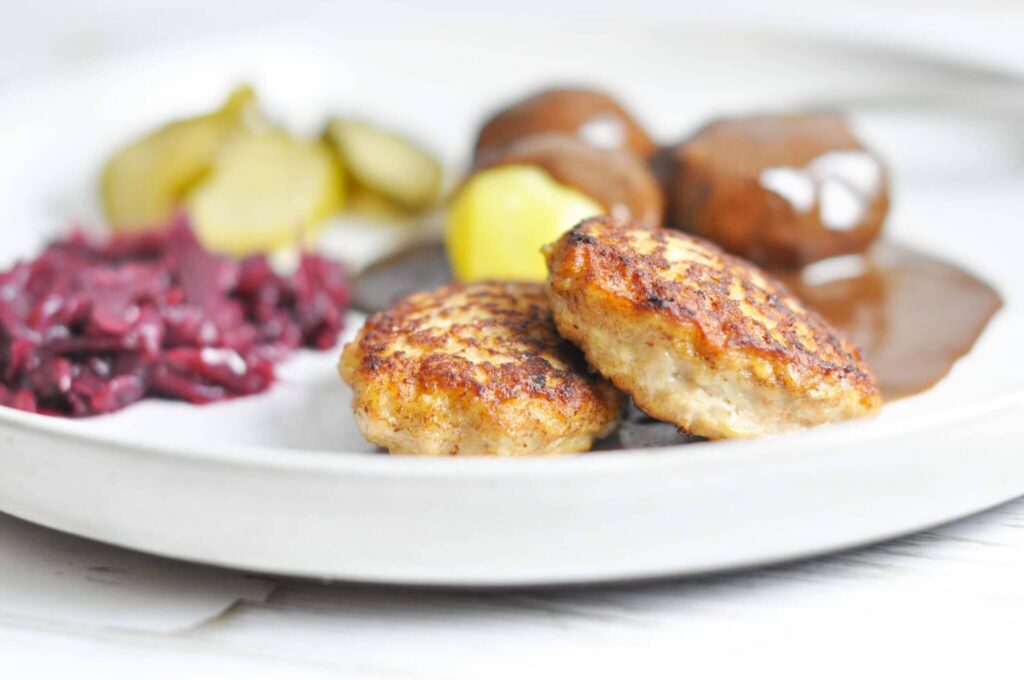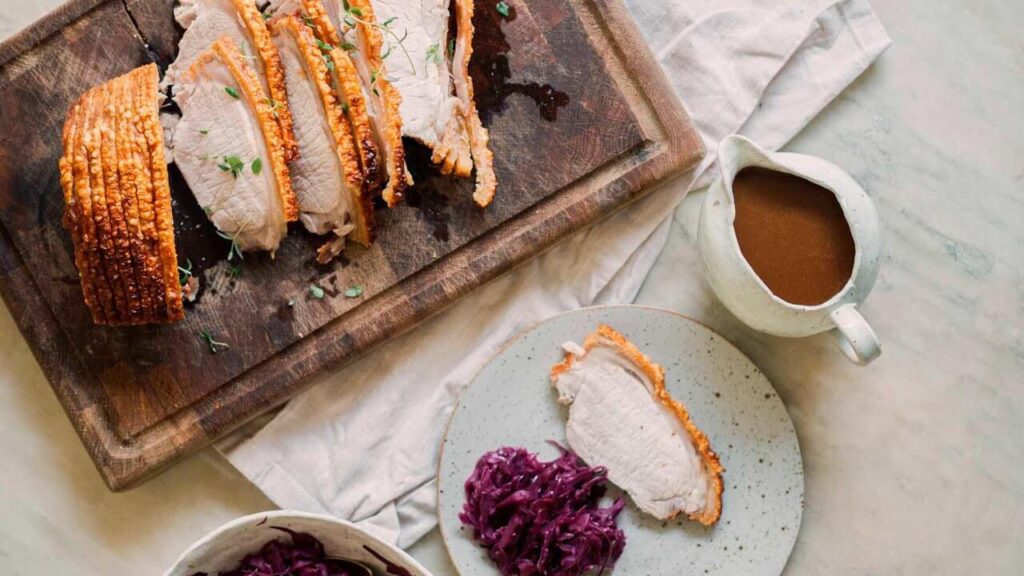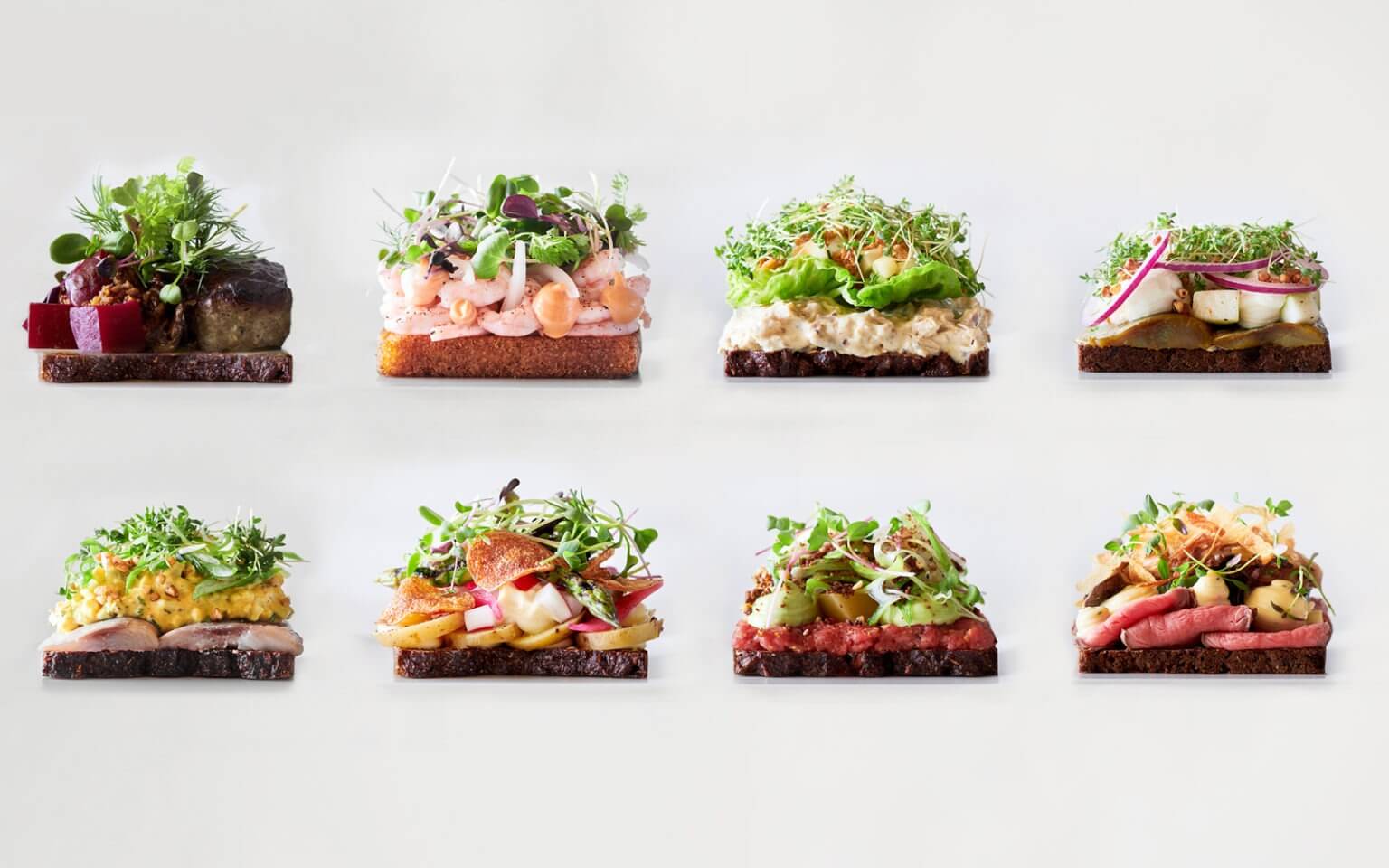Copenhagen’s food scene offers a deep dive into Danish cuisine, and as someone living here, I’ve had my share of hits and misses. The city’s culinary landscape blends tradition with innovation, featuring hearty classics and modern twists that reflect Denmark’s food culture. Some dishes are comforting and familiar, while others can be an acquired taste for foreigners due to their bold flavors or unique textures. In this guide, I’ll share my honest take on Copenhagen’s must-try dishes, where to find them, and tips for your food journey. Ready to explore Danish cuisine in Copenhagen? Let’s get started!
Copenhagen is a foodie hub where Danish cuisine shines through its focus on simplicity, quality ingredients, and seasonal flavors. Think local seafood, hearty rye bread, and pickled everything—hallmarks of Nordic cooking. From Michelin-starred spots to bustling markets, the city serves up authentic Danish dishes that can be both delightful and challenging for foreigners. Some flavors, like the tang of pickled herring or the richness of pork-heavy dishes, might not suit every palate. Let’s explore the must-try dishes in Copenhagen, with a realistic look at what you might love—or find tricky.
Smørrebrød: The Iconic Danish Open-Faced Sandwich
Smørrebrød is a Danish classic that’s hard to miss in Copenhagen, but it’s not always a crowd-pleaser for everyone. I tried it at a café near Nyhavn, and it was an interesting experience.
- What It Is: Smørrebrød is an open-faced sandwich on dense rye bread, topped with options like smoked salmon, pickled herring, roast beef, or liver pate, often garnished with dill, remoulade, or boiled egg.
- Where to Try It: Aamanns is a go-to spot, offering elevated versions like smoked salmon with dill for 80–120 DKK per piece.
- My Take: I enjoyed the fresh salmon version, but the rye bread’s dense, slightly sour taste can be heavy, and the liver pate topping was too gamey for me. You might find the bread’s texture or the strong toppings a bit overwhelming if you’re not used to Nordic flavors.
Smørrebrød is a staple of Danish cuisine, but it might take a few tries to find a topping you love.
Frikadeller: Denmark’s Beloved Meatballs
Frikadeller, Denmark’s version of meatballs, is a comforting dish often found in Copenhagen’s restaurants. I had mixed feelings when I first tried it.
- What It Is: These pan-fried meatballs are made from ground pork and veal, mixed with onions, eggs, and breadcrumbs, served with boiled potatoes, red cabbage, and brown gravy.
- Where to Try It: Restaurant Schønnemann, a historic spot, serves Frikadeller with pickled cucumbers for 150 DKK.
- My Take: The meatballs were tender with a nice crispy exterior, but the heavy gravy and starchy potatoes felt a bit monotonous after a few bites. If you’re not a fan of rich, meaty dishes, this might feel too filling. That said, the tangy pickles helped balance the richness, which I appreciated.
Frikadeller is a hearty part of Danish cuisine, though its heaviness might not suit every palate.

Stegt Flæsk: Crispy Pork with Parsley Sauce
Stegt Flæsk is often called Denmark’s national dish, but it’s not for everyone. I tried it on a chilly day in Copenhagen, hoping for some comfort food.
- What It Is: Thin slices of pork belly are fried until crispy, served with boiled potatoes and a parsley sauce made from béchamel, parsley, and lemon.
- Where to Try It: Restaurant Puk in the city center offers a classic Stegt Flæsk for 180 DKK in a traditional Danish setting.
- My Take: The crispy pork was satisfying, but the fattiness was a bit much for me, and the parsley sauce felt bland despite the lemon. You might find it too greasy or heavy, especially if you prefer lighter meals. If you love pork, though, the crunch of the skin might win you over.
Stegt Flæsk is a quintessential Danish dish, but its richness can be a challenge for some.
Æbleskiver: Sweet Danish Pancake Balls
Æbleskiver are a festive treat I first encountered at a Copenhagen Christmas market, and they’re a lighter side of Danish cuisine.
- What It Is: These round pancake balls are cooked in a special pan, often dusted with powdered sugar and served with raspberry jam, traditionally eaten during the holidays but available year-round.
- Where to Try It: Torvehallerne Market has stalls selling Æbleskiver for 40–60 DKK for a small portion, great for a quick snack.
- My Take: I loved the fluffy texture and subtle sweetness, though they can be a bit doughy if overcooked. Some people might find them underwhelming compared to more decadent desserts, as they’re quite simple. The jam adds a nice touch, but don’t expect a sugar rush.
Æbleskiver offers a sweet break from heavier Danish dishes, though they might not wow everyone.
Rødgrød med Fløde: A Berry Dessert Delight
Rødgrød med Fløde is a traditional Danish dessert that I tried at a friend’s dinner party, and it was a mixed experience.
- What It Is: A thick pudding made from red currants, raspberries, and strawberries, sweetened and thickened with starch, topped with cold cream.
- Where to Try It: Restaurant Kronborg serves an authentic version for 90 DKK, focusing on traditional recipes.
- My Take: The tartness of the berries was refreshing, but the texture was a bit gelatinous, which I found off-putting. The cream helped, but if you’re not into sour flavors, this might not be your thing. Locals love it, though, and it’s a fun way to practice saying “rødgrød med fløde”—a real tongue twister!
This dessert highlights Denmark’s love for berries, but its tartness might not suit all tastes.
Pickled Herring: A Nordic Staple
Pickled herring is a cornerstone of Danish cuisine, but it’s one of the more polarizing dishes I’ve tried in Copenhagen.
- What It Is: Herring is pickled in vinegar with spices like dill, mustard, or curry, often served on rye bread with onions and capers.
- Where to Try It: Restaurant Møntergade offers a herring platter with multiple varieties for 140 DKK, ideal for sampling.
- My Take: The briny, tangy flavor was intense, and while I appreciated the mustard version, the fishy aftertaste lingered too long for my liking. Many people find the strong fishiness and vinegar sharpness a bit much, especially if you’re not used to pickled seafood. A cold Carlsberg beer helped balance it, though.
Pickled herring is a must-try for the experience, but it’s definitely an acquired taste.
Flæskesteg: Roast Pork with Crackling
Flæskesteg is a Danish roast pork dish often tied to festive occasions, and I gave it a go at a Copenhagen restaurant.
- What It Is: Pork roast with a crispy crackling layer, seasoned with bay leaves and cloves, served with caramelized potatoes, red cabbage, and gravy.
- Where to Try It: Restaurant Toldboden by the waterfront serves Flæskesteg for 200 DKK, with harbor views.
- My Take: The crackling was the highlight—crisp and salty—but the pork itself was a bit dry, and the heavy gravy made the dish feel overly rich. If you’re not a fan of fatty meats, this might be too much. That said, the red cabbage added a nice tang that I enjoyed.
Flæskesteg is a festive part of Danish cuisine, but its richness can be a hurdle for some.

Where to Experience Danish Cuisine in Copenhagen
Copenhagen has plenty of spots to try Danish cuisine, from traditional eateries to modern markets. Here are my recommendations, with a realistic take:
- Restaurant Schønnemann: A historic spot since 1877, known for Frikadeller and Smørrebrød. It’s pricey (300–400 DKK for a meal with drinks), and the old-school vibe might feel stuffy for some.
- Torvehallerne Market: A lively market with stalls offering Æbleskiver and Smørrebrød. It’s budget-friendly (dishes from 40 DKK), but it can get crowded, and seating is limited.
- Restaurant Kronborg: Focuses on traditional dishes like Rødgrød med Fløde in a cozy setting. Meals average 200–250 DKK, though service can be slow during peak hours.
- Reffen Market: For a street food twist, try Flæskestegssandwich. It’s vibrant but can be chaotic on weekends.
These spots offer a range of experiences, though each has its quirks to navigate.
Pairing Danish Dishes with Local Drinks
Pairing Danish dishes with local drinks can enhance your meal—or help balance flavors you might find challenging. Here’s what I suggest:
- Aquavit: This spiced spirit pairs well with Smørrebrød and pickled herring, cutting through their richness. I found it a bit strong, but it’s a classic. Try Aalborg Akvavit, available at most spots.
- Carlsberg Beer: A crisp lager that works with heavy dishes like Frikadeller and Stegt Flæsk. It’s widely available for 40–60 DKK, though I found it a bit too light to fully balance the richness.
- Gløgg: This mulled wine is great with Æbleskiver in winter, sold at markets for 50 DKK. It’s sweet, but some might find it overly spiced.
These drinks add a local flair, though their bold flavors might not suit everyone.
Seasonal Events for Food Lovers in Copenhagen
Copenhagen’s food scene comes alive with seasonal events showcasing Danish cuisine. This year, here are a few to consider:
- Copenhagen Cooking Festival: Held in August, this festival features pop-up kitchens and tastings of dishes like Smørrebrød. Entry starts at 100 DKK, but it can get crowded, and some dishes sell out fast.
- Christmas Markets: From November to December, markets like Tivoli Gardens offer Æbleskiver and gløgg. Entry is free with park admission (135 DKK), though the festive crowds can be overwhelming.
- Torvehallerne Events: The market hosts food tastings with local producers. They’re free, but the selection can be hit-or-miss depending on the day.
These events let you experience Danish cuisine in a lively setting, though they come with some challenges.
Tips for Exploring Danish Cuisine in Copenhagen
Here’s how to make the most of your Danish cuisine journey in Copenhagen, with a realistic approach:
- Start Small with Smørrebrød: If you’re unsure about strong flavors like herring, opt for milder toppings like smoked salmon to ease in.
- Be Ready for Heaviness: Dishes like Stegt Flæsk and Frikadeller are rich, so pace yourself if you’re not used to heavy meals.
- Ask Locals: Copenhageners can point you to hidden gems, though some recommendations might lean toward touristy spots.
- Bring Cash for Markets: Some stalls prefer cash for small purchases, even if most places take cards.
- Explore More: For related travel ideas, read our latest travel blog.
These tips will help you navigate the highs and lows of Danish cuisine in Copenhagen.
Why Danish Cuisine in Copenhagen Is Worth Exploring
Copenhagen’s Danish cuisine offers a mix of comforting classics and bold flavors, from Smørrebrød to pickled herring. Some dishes might delight you, while others could be an acquired taste due to their intensity or richness. Ready to try the best Danish cuisine in Copenhagen? Share your experience below!





0 Comments